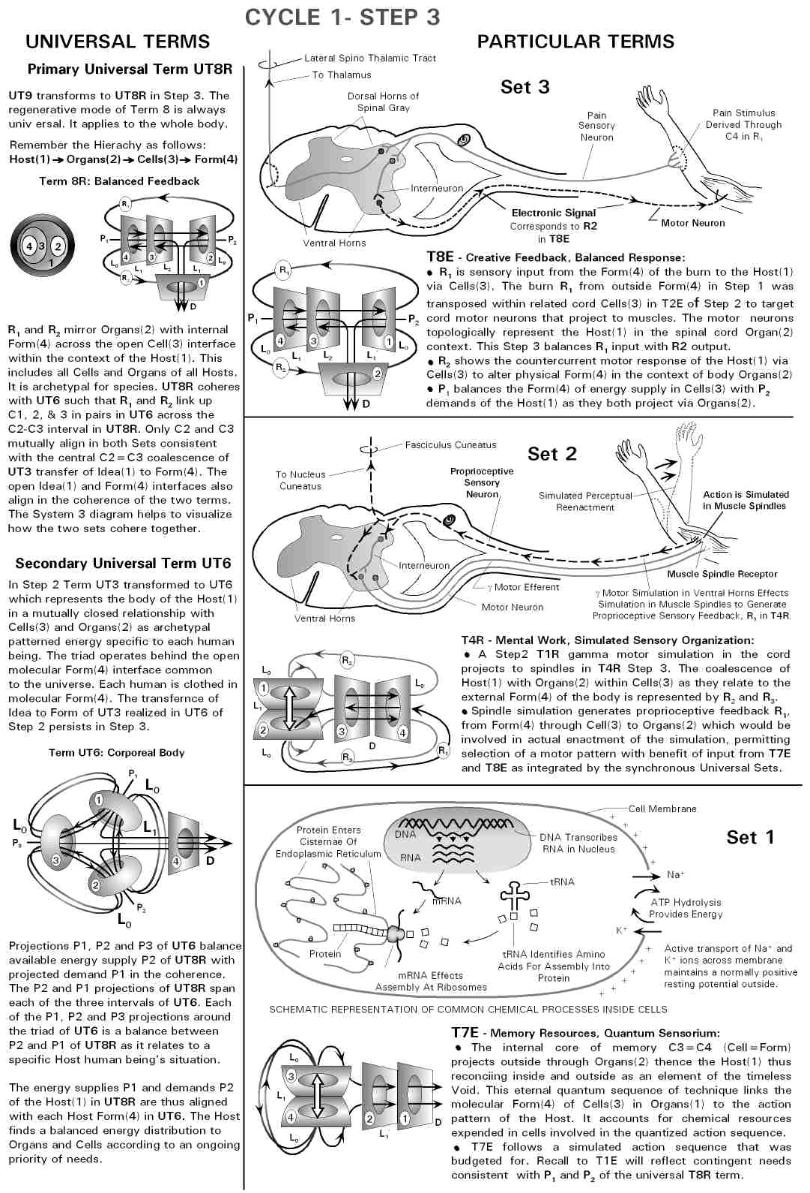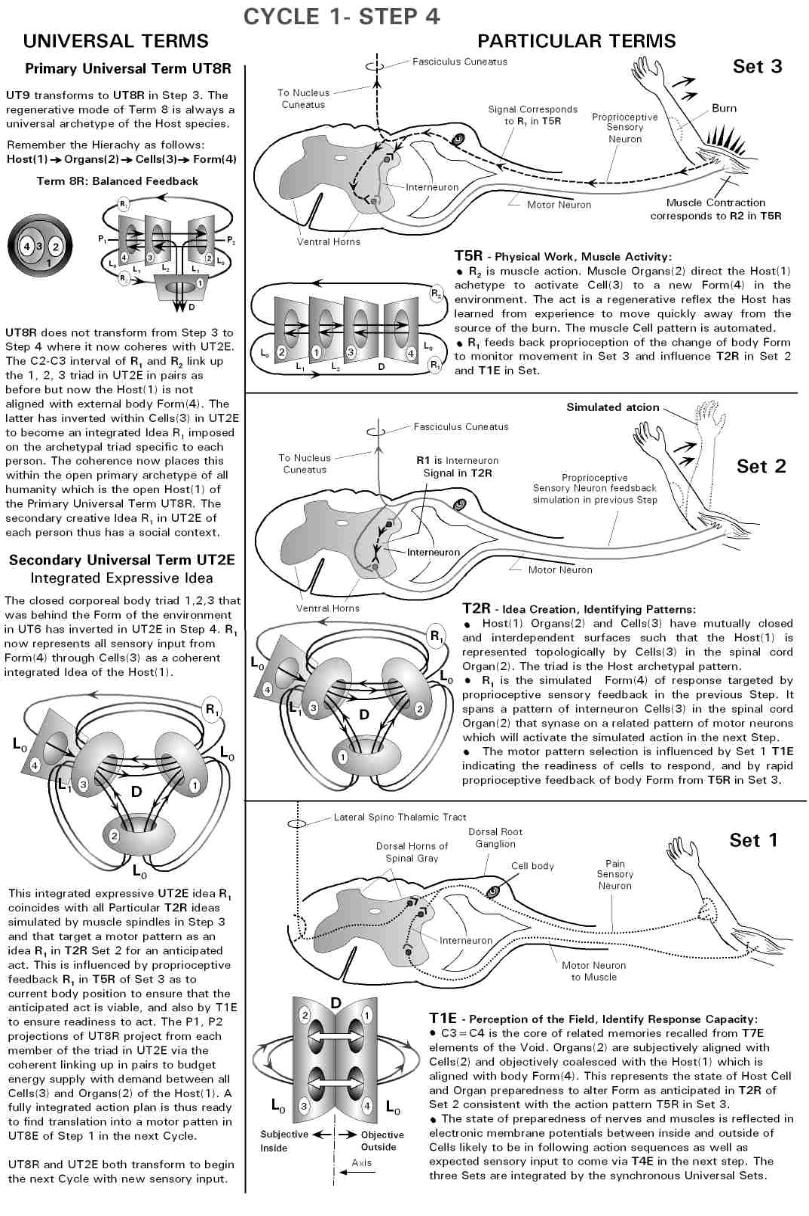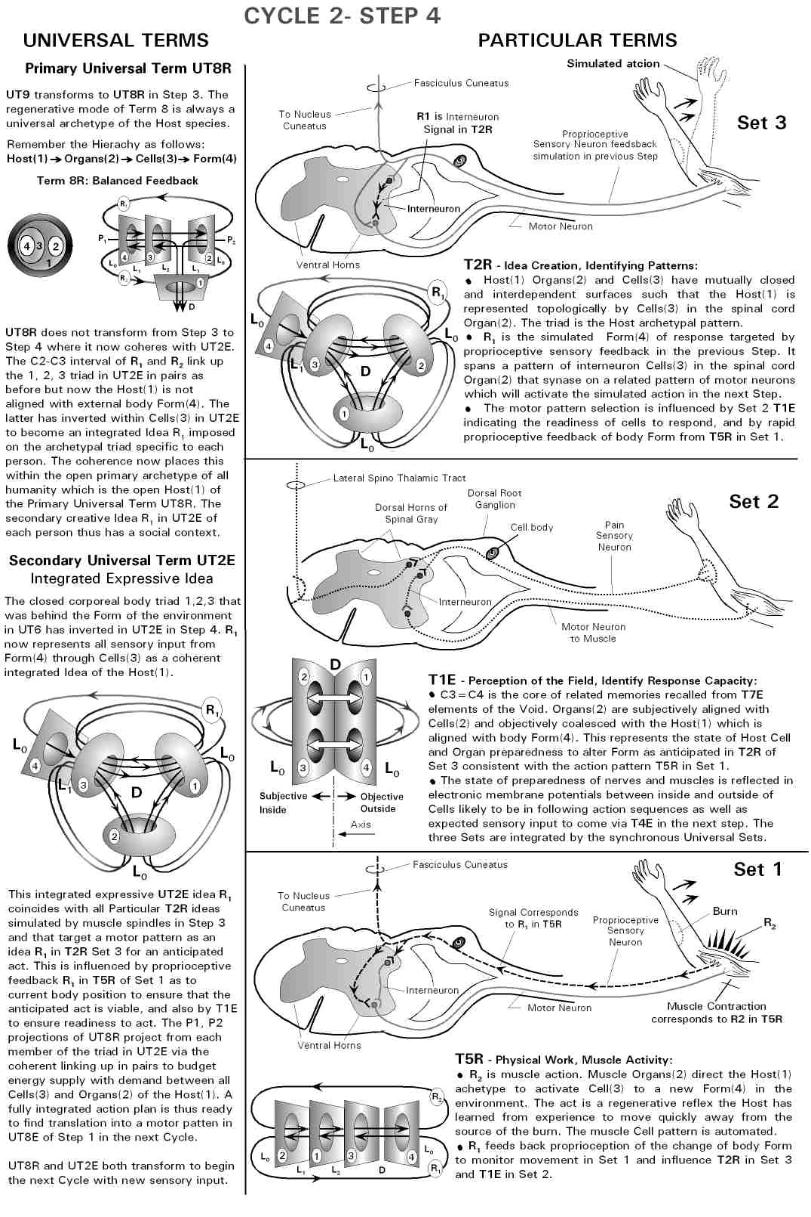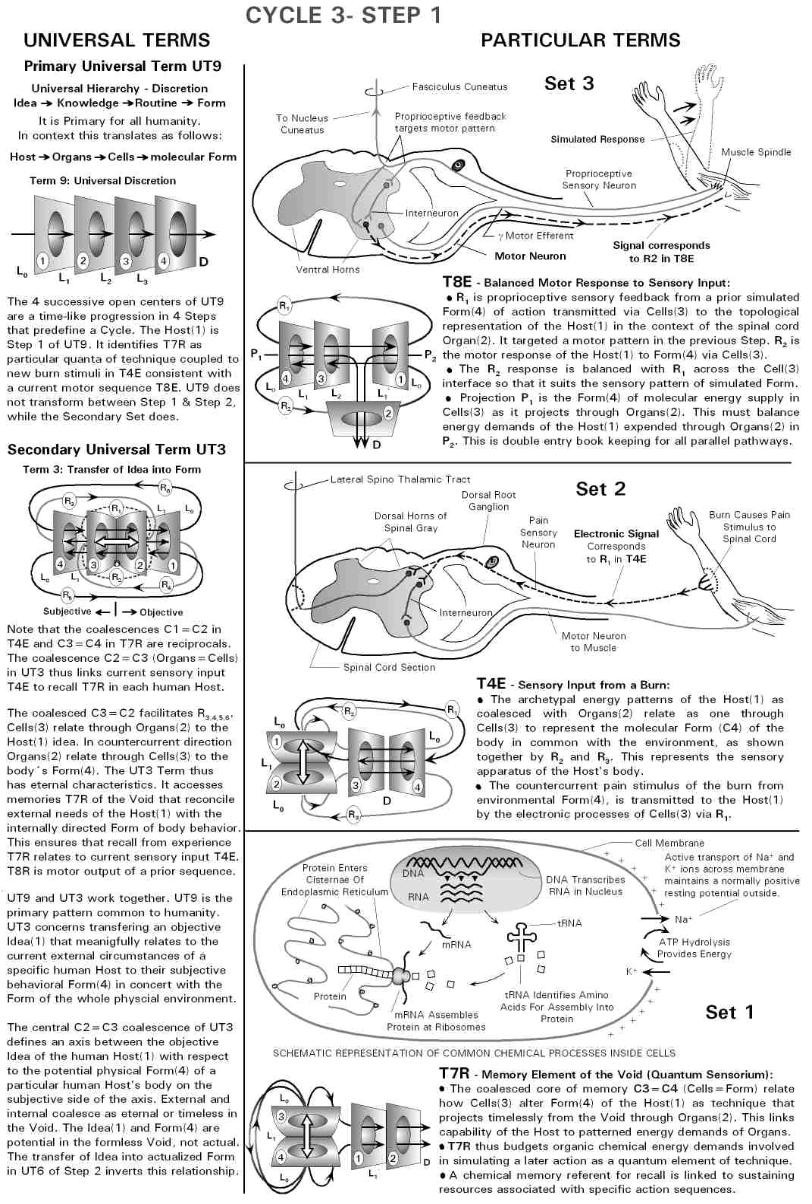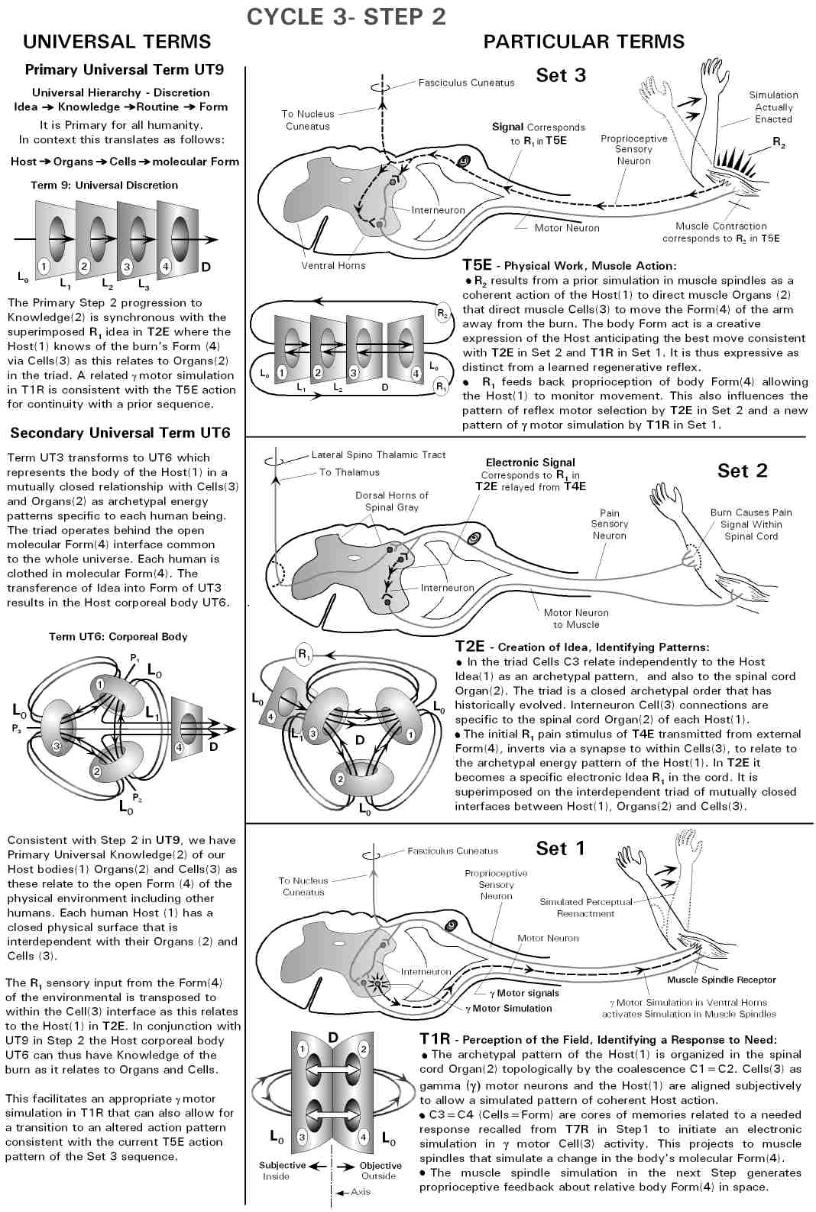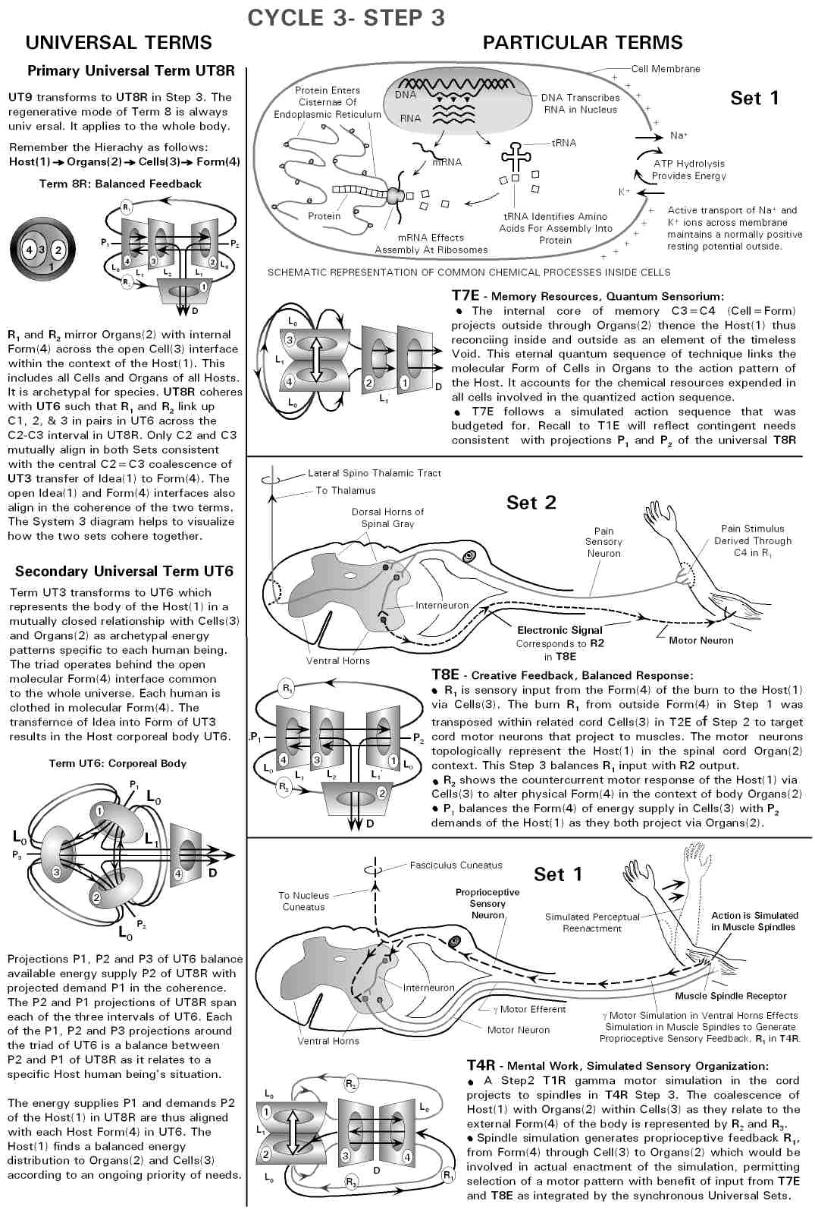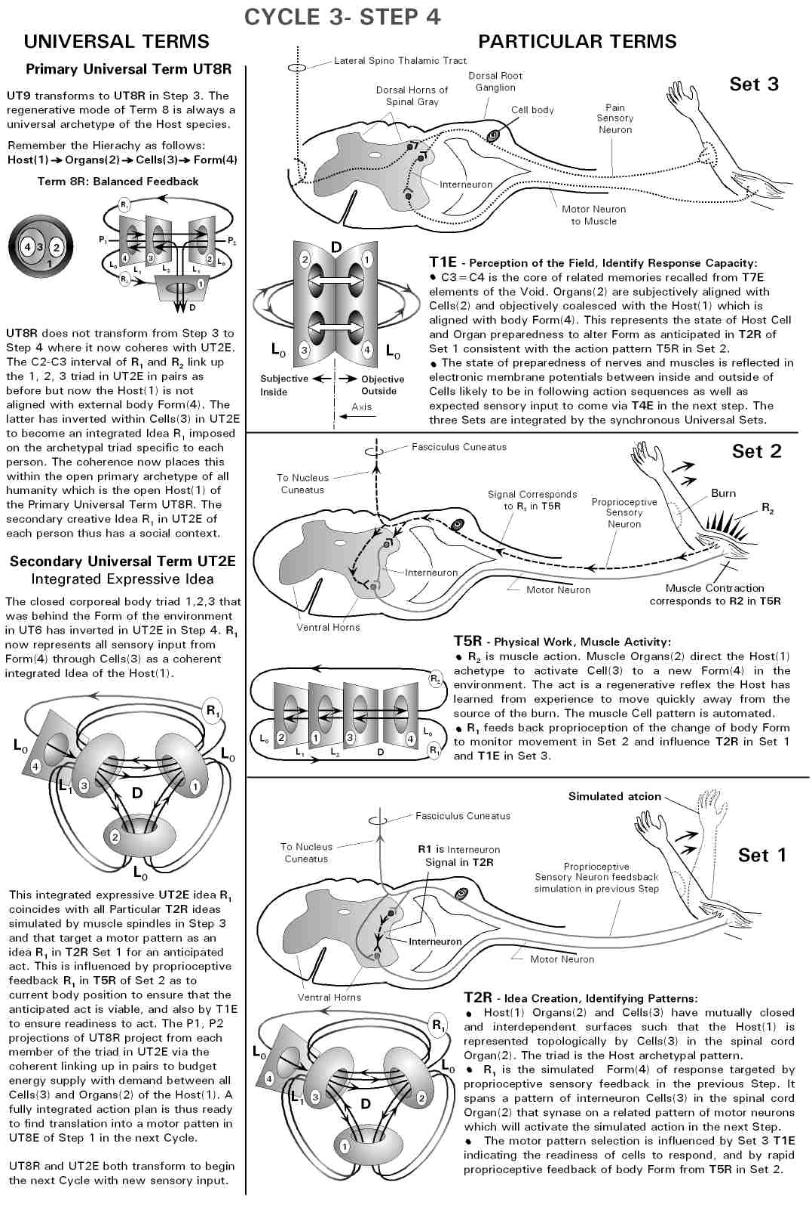
| Step | Term | Meaning |
|---|---|---|
| 1 | T1 | Perception of need in relation to response capacity |
| 2 | T4 | Ordered sensory input alternately from the environment or simulated |
| 3 | T2 | Creation of idea as a potential action response or creative concept |
| 4 | T8 | Balanced response to sensory input stimuli as a motor output to muscles |
| 5 | T5 | Action sequence of muscular activity with proprioceptive feedback |
| 6 | T7 | Sequence encoded as a unit memory for recall to T1 and another sequence |
| Step | Set 1 | Set 2 | Set 3 | Set U1 | Set U2 | Cycle |
|---|---|---|---|---|---|---|




